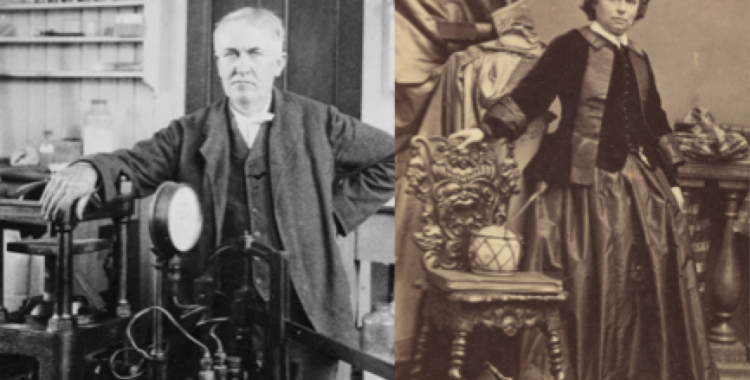
Lifecycle of Inventors, Lifecycle of (Female) Artists
January 29, 2016
by Diana Greenwald | Filed in: Conferences
As mentioned in the last post, thousands of social scientists recently descended on San Francisco for the American Economic Association annual meetings.
Unfortunately, a discussion of the economics of art was not featured on the program. However, several sessions presented novel methods, research questions, and analyses that can be applied to the study of the economics of the arts. This post—like the previous one, and the following one—presents a topic discussed in one of the conference sessions and how that topic applies to the study of art and economics.
Heidi Williams—a recent recipient of the MacArthur Genius Grant—organized a session called “Innovation and Technological Change.” The papers presented were diverse and exciting. They covered topics ranging from “new use” patents on pharmaceutical compounds to “crowding-in” effects around government-funded research and development projects. However, the paper that was most relevant for people interested in art and economics was “The Lifecycle of Inventors,” presented by co-author John Van Reenen.
In the paper, Van Reenen and his co-authors (Alex Bell, Raj Chetty, Xavier Jaravel and Neviana Petkova) exploit enormous datasets about individuals listed on patent applications, school testing records, and U.S. tax returns to reconstruct the average life cycle of the American inventor. They conclude that the average inventor is male, likely from a prosperous community or family that is engaged in an innovative sector (biotechnology, software engineering, etc.). He also had strong mathematics test scores as a child.
The punchline of the paper for public policy is that by exposing children to innovative industries and individuals, one may be able to close the gender and socio-economic gap between people who successfully patent inventions and those who do not. A country may, therefore, be able to harness the innovative energy of those individuals who are currently hindered by structural constraints—like family income level or gender bias.
What is the punch line for those studying art and economics? Several scholars—notably Kathryn Graddy and Karol Borowiecki—have studied how personal tragedy affects the creative output of individual artists and composers. However, no one has looked at which individuals are more disposed to become artists. This study of predisposition could be particularly illuminating for the study of female artists—or more precisely the lack of women artists.
In 1971, art historian Linda Nochlin wrote a landmark essay called “Why Have There Been No Great Women Artists?” In it, she explores historical structural reasons for why it has been impossible for women to reach the upper echelons of artistic achievement. However, something she does not discuss is the predilection of female artists who have the most success to be the daughters of male artists. These include Rosa Bonheur and Artemesia Gentileschi. Perhaps the same familial ties that drive people to become inventors are pushing the few women who broke through the historically male-dominated world of artists.
Daughters Change Everything… >>
<< On the History of Capitalism
